Keeping guppies in my tank has been quite a learning experience. These fish are not only nice to look at but also pretty easy to care for.
But, like any pet, they sometimes get sick, and that’s when I need to help out.
Taking care of sick fish can be tricky, especially for guppies because they have their own special needs.
So, I put together this guide.
In it, I talk about 15 common health problems that guppies can have and offer some good solutions for each.
Let’s dive into it.
Also Read: Guppy Care Guide
13 Most Common Guppy Fish Diseases
1. Ich (Ichthyophthirius multifiliis)
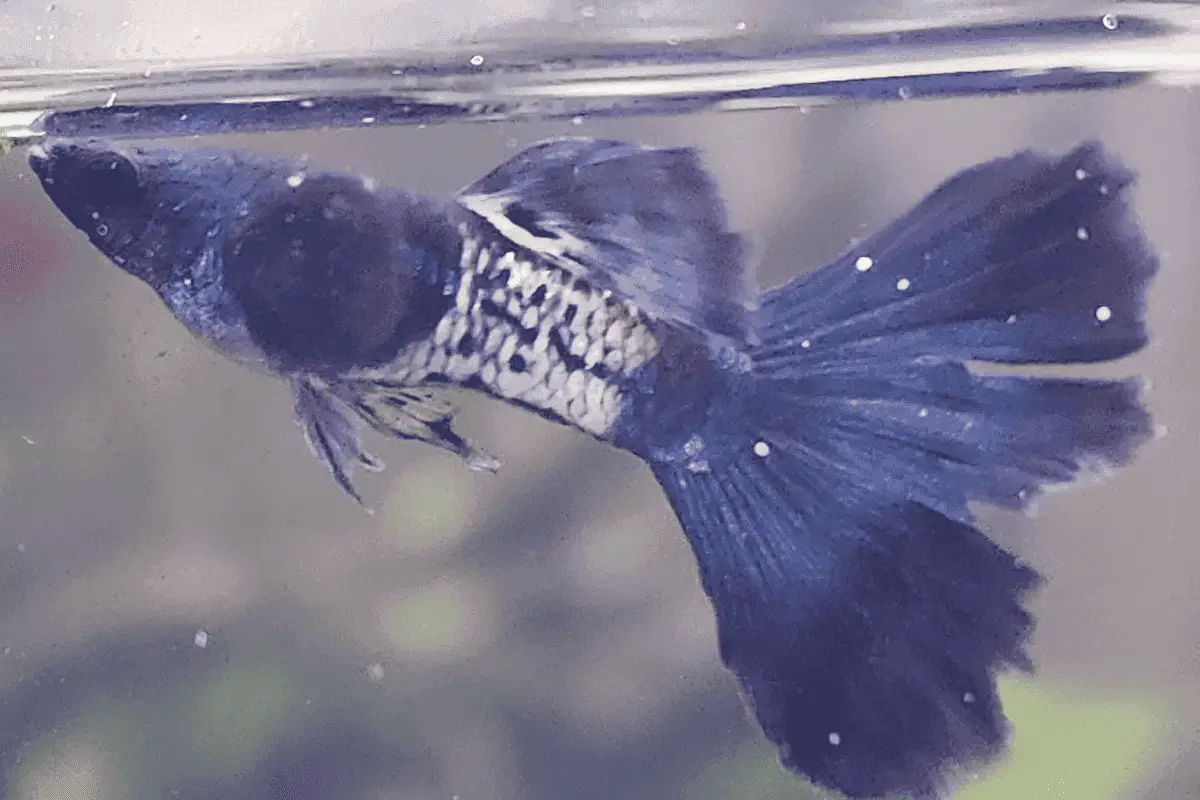
Ich, commonly known as “White Spot Disease,” is a parasitic infection caused by a protozoan.
The disease is highly contagious and often occurs in fish under stress. Ich appears as tiny white cysts on the skin, gills, and fins of fish.
Symptoms:
- White, salt-like spots covering the body and fins
- Fish scraping against objects due to irritation
- Clamped fins and reduced swimming activity
- Rapid gill movement or gasping at the water surface
- Loss of appetite
Treatment:
- Increase aquarium temperature gradually to 82°F and maintain for at least 10 days to speed up the parasite’s life cycle.
- Dose the water with a copper-based medication, following the manufacturer’s instructions, usually 0.15-0.2 mg/L, with a 50% water change before each treatment. I personally use this Fritz Mardel Coppersafe (link to Amazon).
- Add aquarium salt, 1-2 teaspoons per gallon, to help the fish’s gill function and reduce stress.
- Conduct partial water changes daily to reduce the number of free-swimming parasites.
2. Fin and Tail Rot
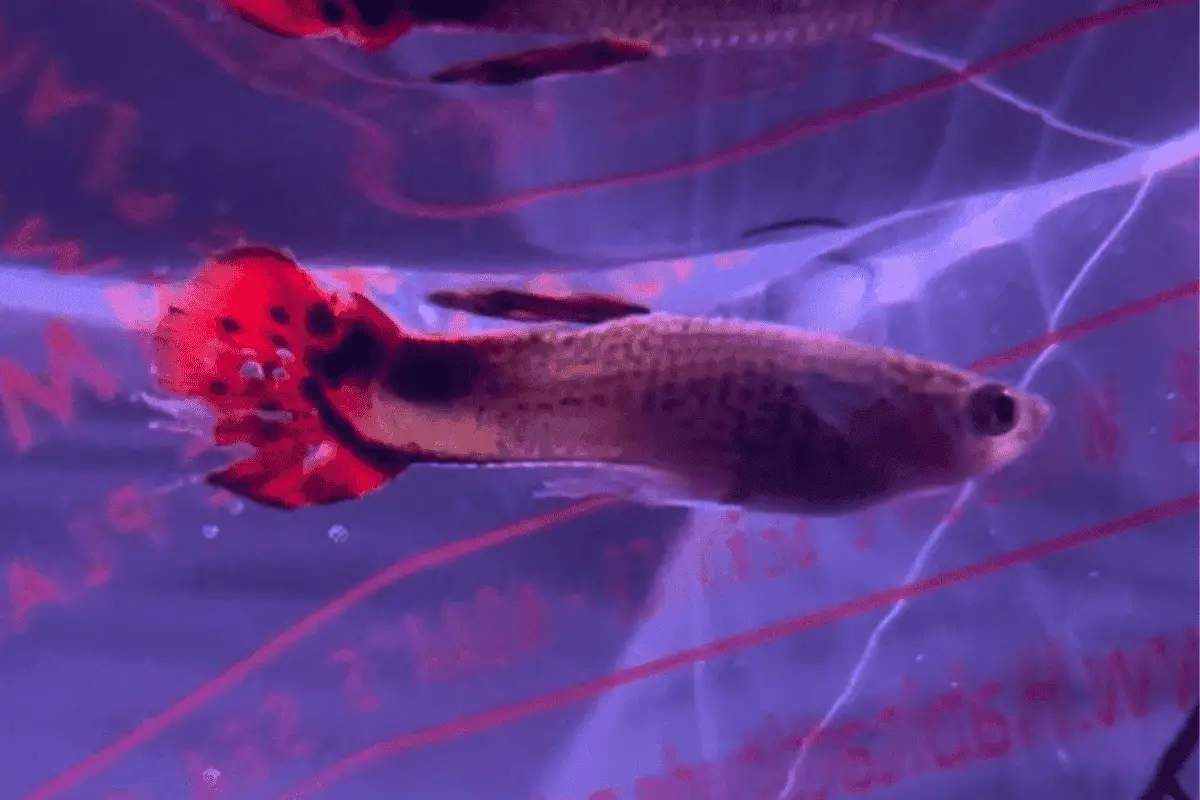
Fin Rot is a bacterial infection that affects the fins and tail of fish, leading to fraying and discoloration.
This condition often results from poor water quality or injury. It starts at the edges of fins and can progressively worsen without treatment.
Symptoms:
- Fins or tail appear torn or frayed
- Discoloration or redness at the edges of fins
- Inflammation or bleeding of fins
- White or cloudy edges on fins
- Decreased activity and appetite
Treatment:
- Improve water conditions by performing 25-30% water changes every other day and maintaining proper filtration.
- Apply a broad-spectrum antibiotic like erythromycin; dosage typically is around 10 mg per liter, repeated every 3 days for up to 10 days.
- Use aquarium salt in the water, around 1 teaspoon per gallon, to aid in healing and prevent secondary infections.
- Isolate affected fish in a hospital tank to prevent spread and allow for targeted treatment.
Also Read: Guppy Losing Tail, Scales and Fins
3. Velvet Disease (Oodinium)
Velvet Disease, caused by the dinoflagellate parasite Oodinium, manifests as a yellowish or rusty dusting on the fish’s body and gills.
It is highly contagious and often fatal if not treated promptly. The disease thrives in poor water conditions.
Symptoms:
- Yellow or gold dust-like coating on skin
- Clamped fins and scratching against objects
- Rapid gill movement and labored breathing
- Lethargy and loss of appetite
- Fading of body color
Treatment:
- Increase the tank temperature to around 82°F to speed up the life cycle of the parasite.
- Administer a copper-based treatment, dosing around 0.2 mg/L copper, and repeat after 48 hours based on the product instructions.
- Dim the tank lighting as the parasite is photosynthetic and thrives in light.
- Perform daily 30% water changes to remove free-swimming parasites and improve water quality.
4. Dropsy
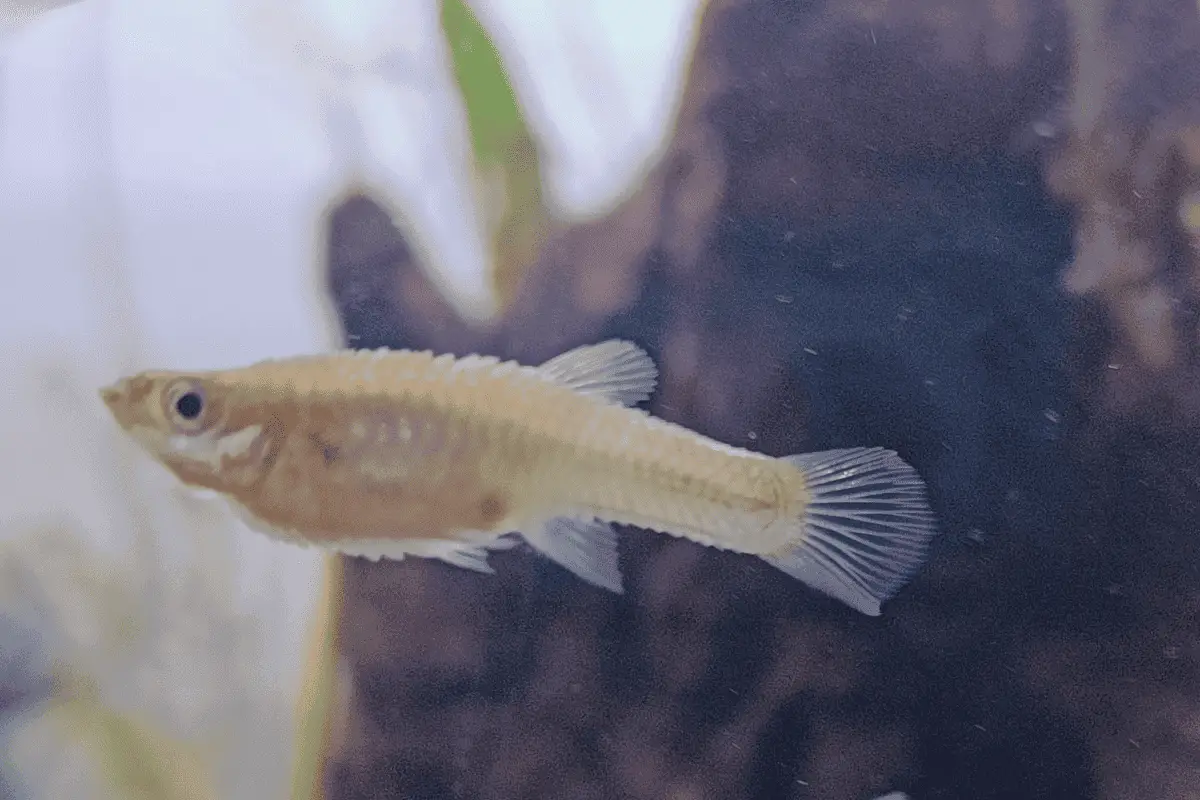
Dropsy is a symptom rather than a specific disease, characterized by abdominal swelling due to fluid accumulation.
It is often a sign of kidney failure or bacterial infection. Dropsy is difficult to treat and can be fatal if not addressed quickly.
Symptoms:
- Swollen, bloated abdomen
- Scales sticking outwards, resembling a pinecone
- Bulging eyes (exophthalmia)
- Pale gills and lethargy
- Loss of appetite
Treatment:
- Isolate the affected fish in a hospital tank to prevent spreading.
- Treat with a broad-spectrum antibiotic like Kanamycin; dose at 5 mg per liter, and continue for at least 5-7 days.
- Increase water temperature slightly to 80°F to boost the fish’s immune system.
- Add Epsom salt (not aquarium salt) at a rate of 1-3 teaspoons per 5 gallons to help reduce swelling.
Also Read: Why Is My Guppy Fat?
5. Fungal Infections

Fungal infections in guppies are characterized by cotton-like growths on the skin, fins, or gills.
These infections often occur in fish with compromised immune systems or injuries. Fungi thrive in poor water conditions.
Symptoms:
- Cotton-like or fluffy growths on the body, fins, or gills
- Ulcers or wounds on the skin
- Discoloration of the affected area
- Reduced appetite and lethargy
- Frayed or deteriorating fins
Treatment:
- Isolate affected fish to prevent the spread of infection.
- Treat the water with an antifungal medication such as Malachite Green, using 0.05 mg/L, and repeat the treatment every 3 days.
- Perform regular water changes, around 20-25%, to maintain good water quality and remove fungal spores.
- Add aquarium salt at a rate of 1 teaspoon per gallon to help fish recover and reduce stress.
6. Bacterial Infections
Bacterial infections in guppies can manifest in various forms, including fin rot, tail rot, and ulcers. These infections often result from poor water quality, overcrowding, or injury.
Symptoms:
- Red streaks or sores on the body
- Fins or tail appear ragged or rotting
- Bulging eyes (exophthalmia)
- Abdominal swelling
- Lethargy and loss of appetite
Treatment:
- Improve tank conditions with regular water changes (25-30%) and proper filtration.
- Use a broad-spectrum antibiotic like Tetracycline or Erythromycin; dose at 200-400 mg per 40 gallons, with treatment repeated every 2 days.
- Add aquarium salt, 1 teaspoon per gallon, to assist in the healing process.
- Ensure a well-balanced diet to strengthen the fish’s immune system.
7. Swim Bladder Disease

Swim Bladder Disease affects a fish’s ability to control its buoyancy, often resulting in floating or sinking abnormally. It can be caused by bacterial infections, poor water quality, or overfeeding.
Symptoms:
- Difficulty in maintaining buoyancy
- Floating upside down or at the surface
- Sinking to the bottom of the tank
- Swollen abdomen
- Curved back or abnormal posture
Treatment:
- Fast the fish for 24-48 hours to relieve digestive issues.
- After fasting, feed peas (cooked and skinned) to help clear digestive blockages.
- Ensure water quality is optimal, with regular 20-25% water changes.
- In cases of bacterial infection, treat with a mild antibiotic like Maracyn-Two, dosing as per the manufacturer’s guidelines.
Also Read: Guppy Fish Swimming Vertically
8. Red Pest Disease

Red Pest Disease, also known as Bacterial Hemorrhagic Septicemia, is caused by a bacterial infection and is characterized by red streaks or spots on the fish’s body.
It is highly contagious and can be fatal if not treated promptly.
Symptoms:
- Red streaks or sores on the body
- Bloody patches on the skin or under the scales
- Ulcers or open wounds
- Swollen body or fins
- Lethargy and loss of appetite
Treatment:
- Isolate infected fish immediately to prevent the spread of the disease.
- Treat with a specific antibiotic like Kanamycin or Nitrofurazone; follow the dosage as per instructions, usually 5 mg/L for Kanamycin.
- Perform daily 20-30% water changes to keep the environment clean and reduce bacterial load.
- Maintain water temperature at a consistent level, ideally around 78°F, to support the immune system of the fish.
10. Columnaris (Cotton Wool Disease)

Columnaris, also known as Cotton Wool Disease, is caused by the bacterium Flavobacterium columnare.
It appears as white or grayish patches on the skin, fins, or gills, resembling cotton wool. The disease is highly contagious and can be fatal if not treated promptly.
Symptoms:
- White or grayish patches on skin, fins, or gills
- Ulcerations or sores on the body
- Fins eroding or fraying
- Rapid breathing or gill discoloration
- Loss of appetite and lethargy
Treatment:
- Isolate affected fish to prevent the spread of the infection.
- Treat with antibiotics such as Erythromycin or Kanamycin; typical dosage is 5 mg per liter of water, administered for at least 5-7 days.
- Increase water temperature slightly (to around 78-80°F) to enhance the effectiveness of the medication.
- Conduct daily 20-25% water changes to maintain water quality and remove bacteria.
11. Lice and Worms Infestation
Lice and worms in guppies are external parasites that attach to the fish’s body, causing irritation and stress.
Lice are visible to the naked eye, while worms may be seen as tiny threads hanging from the fish.
Symptoms:
- Visible lice or worms on the fish’s body
- Scratching or rubbing against objects
- Redness or irritation on the skin
- Lethargy and reduced swimming activity
- Loss of appetite
Treatment:
- Manually remove visible parasites with a pair of tweezers under mild sedation (using clove oil).
- Treat the tank with a parasitic medication like Praziquantel; dosage typically ranges from 2.5 to 5 mg per liter, applied for up to 5 days.
- Perform a 25-30% water change before and after treatment to remove parasites and eggs.
- Quarantine new fish before introducing them to the main tank to prevent infestation.
Also Read: Why Does My Guppy Have White Poop?
12. Gill Flukes

Gill Flukes are tiny parasites that infect the gills of fish, causing respiratory distress and irritation. These parasites are microscopic and require a diagnosis from a vet or a specialist.
Symptoms:
- Rapid gill movement or difficulty breathing
- Mucus buildup on the gills
- Fish staying near the water surface for air
- Rubbing gills against objects
- Lethargy and loss of appetite
Treatment:
- Treat the aquarium with Praziquantel, dosing 2.5 mg per liter of water, for up to 5 days.
- Increase oxygenation in the tank with additional air stones or pumps.
- Perform regular water changes, 25-30%, to reduce the parasite load.
- Maintain optimal water quality and temperature to support fish health.
13. Hole-in-the-Head Disease
Hole-in-the-Head Disease is characterized by pitting or crater-like lesions on the head and body of the fish.
The exact cause is unknown, but it’s linked to poor water quality and nutritional deficiencies.
Symptoms:
- Pitting or sores on the head and later the body
- Loss of appetite and weight loss
- Lethargy and color fading
- Mucus production around lesions
- Secondary infections in the affected areas
Treatment:
- Improve water quality through frequent water changes (30-40% weekly) and proper filtration.
- Supplement the diet with high-quality, vitamin-enriched foods to boost the immune system.
- Treat with Metronidazole; a typical dosage is 250 mg per 10 gallons of water, administered for 5-7 days.
- Ensure a stress-free environment by maintaining stable water parameters and minimizing tank disturbances.
14. Pop-Eye Disease

Pop-Eye Disease, or exophthalmia, is characterized by one or both eyes bulging abnormally. It’s usually a symptom of an underlying bacterial infection, injury, or poor water quality.
Symptoms:
- One or both eyes bulging outwards
- Cloudiness or discoloration in the affected eye
- Difficulty swimming or navigating
- Lethargy and reduced feeding
- Swelling around the eye
Treatment:
- Isolate the affected fish to prevent spread and for targeted treatment.
- Improve water quality with regular water changes (25-30%) and good filtration.
- Administer an antibiotic like Tetracycline; dose 500 mg per 20 gallons of water, repeated every 48 hours.
- Add Epsom salt to the water (1 teaspoon per 5 gallons) to help reduce swelling and stress.
Tips for Maintaining an Ideal Hospital Tank for Guppies
Maintaining a hospital tank for guppies is key to effectively treating sick fish and preventing disease spread in your main tank.
It provides a controlled environment for recovery and medication administration.
- Appropriate Size: Opt for a 5-10 gallon tank, ideal for individual or small groups of guppies. This size simplifies medication dosage, requiring approximately 1-2 ml per gallon for common treatments.
- Stable Water Conditions: Maintain water temperature at 78°F and pH levels at 7.2 for optimal recovery conditions. Use a reliable heater and pH test kits to ensure stability. My recommendation: API Freshwater Master Test Kit (link to Amazon).
- Filtration and Aeration: Install a sponge filter rated for your tank size to provide gentle filtration without strong currents. Ensure an air pump provides consistent oxygenation, crucial for stressed fish.
- Minimal Decor: Use a bare-bottomed approach or fine gravel for easy cleaning. Avoid hard or sharp decorations to reduce injury risks and simplify maintenance.
- Regular Monitoring: Daily check water quality with a test kit, aiming for ammonia and nitrite levels at 0 ppm. Observe fish behavior and appearance closely for any signs of deterioration or improvement.
Also Read: Stress In Guppy Fish
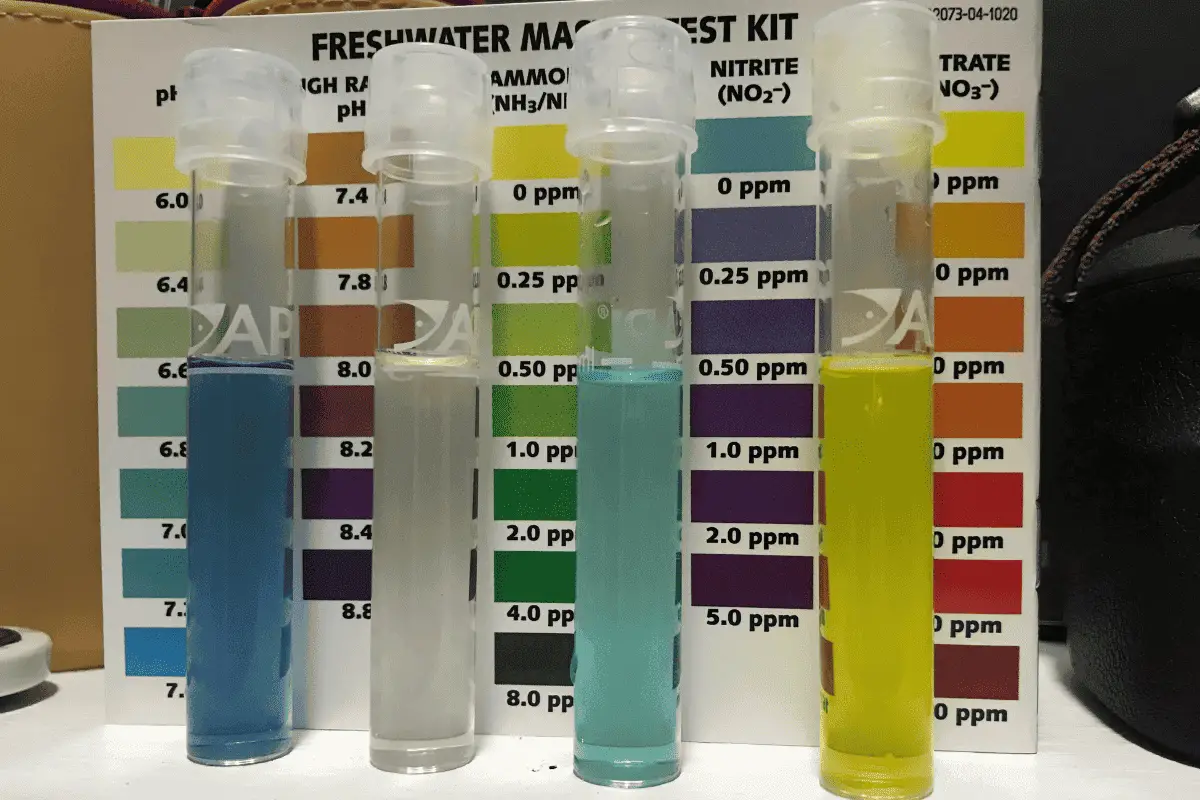
How to Properly Consult an Aquarium Vet
When consulting an aquarium vet, it’s important to provide detailed information about your fish and their environment.
This helps the vet make an accurate diagnosis and recommend the best course of treatment.
- Detailed Symptoms Description: Clearly describe the symptoms you’ve observed, including changes in behavior, appearance, and eating habits. Note when the symptoms first appeared and any progression since then.
- Water Quality Report: Provide recent water parameter readings, including pH, ammonia, nitrite, and nitrate levels. Use a good quality test kit and record the results for a few days before the consultation.
- Tank Environment Details: Share information about your tank size, filtration system, and any recent changes like new plants or fish introductions. This helps the vet understand potential stressors in the environment.
- Dietary Habits: Inform the vet about the type and frequency of food you give to your guppies. Include any recent changes in diet or feeding routines.
- Previous Treatments: If you’ve attempted any treatments or added medications, provide specifics, including product names, dosages, and durations. This information helps the vet avoid repeating ineffective treatments.

Are Guppies Prone to Disease?
Yes, guppies are prone to diseases, particularly when kept in suboptimal conditions.
They are sensitive to poor water quality and stress, which can weaken their immune system and make them susceptible to various infections.
As mentioned earlier, common health issues include parasitic, bacterial, and fungal infections, often exacerbated by overcrowding and inadequate tank maintenance.
Which Disease Is Most Common in Guppies?
The most common disease in guppies is Ich, also known as White Spot Disease.
This disease is notable for its rapid spread and high contagion level in aquarium settings, making prompt and effective treatment crucial to prevent widespread infection among the fish population.
Ensuring optimal tank conditions and observing fish behavior for early signs of Ich are key preventive measures.
Also Read: Breeding Guppy Fish
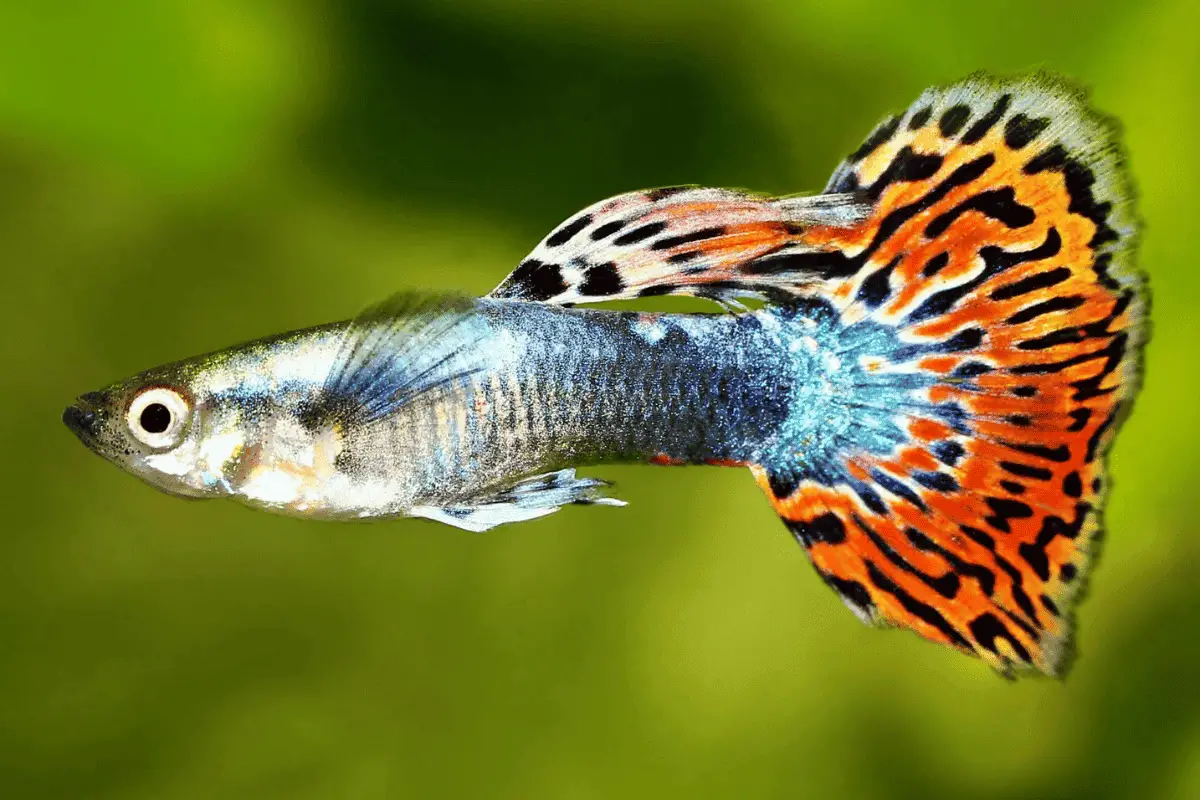
Conclusions
For quick readers, here’s a short summary:
- Guppies are prone to various diseases, most commonly caused by poor water quality, stress, and overcrowding, necessitating vigilant tank maintenance and water quality control.
- Effective treatment for guppy diseases often includes isolation in a hospital tank, targeted medication, and adjustments in water conditions, like temperature and salinity.
- Regular monitoring of guppy health, including behavior and physical symptoms, is crucial for early detection and treatment of diseases to prevent widespread outbreaks.
- Maintaining a hospital tank for guppies is essential, ensuring a controlled environment for recovery and precise medication dosing, with stable water conditions and minimal decor.
- Consulting an aquarium vet with detailed information about symptoms, water quality, and tank environment is key for accurate diagnosis and effective treatment of guppy diseases.
